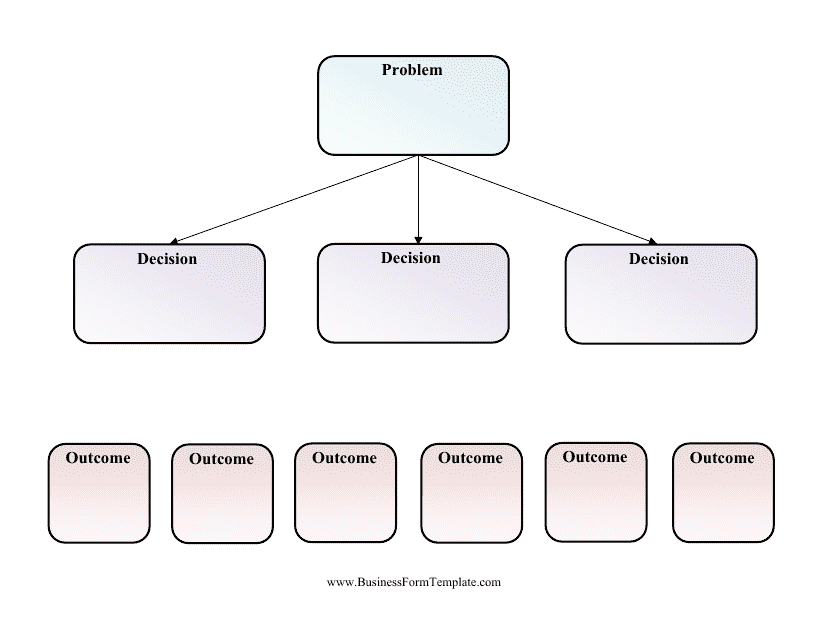Blank Decision Tree Template
A Blank Decision Tree Template is a tool used to visually represent a series of decisions and their possible outcomes. It helps in organizing and analyzing information to make informed choices or resolve problems.
FAQ
Q: What is a decision tree?
A: A decision tree is a graphical representation of a decision-making process, showing all possible outcomes and their probabilities.
Q: Why would I use a decision tree?
A: Decision trees can be used to analyze and solve complex problems, make informed decisions, and prioritize actions.
Q: How do I create a decision tree?
A: There are several methods to create a decision tree, including manual construction, using specialized software, or employing machine learning algorithms.
Q: What are the components of a decision tree?
A: The components of a decision tree include decision nodes, chance nodes, branches, outcomes, and probabilities associated with each outcome.
Q: What are the advantages of using a decision tree?
A: Decision trees are easy to understand and interpret, can handle both numerical and categorical data, and can be used for both classification and regression problems.
Q: Are there any limitations or drawbacks to using decision trees?
A: Some limitations of decision trees include the potential for overfitting, sensitivity to small changes in the data, and difficulty in handling large datasets with many variables.
Q: Can decision trees be used for real-world applications?
A: Yes, decision trees are widely used in various fields such as business, healthcare, finance, and engineering for decision-making and problem-solving purposes.
Q: Are there any alternatives to decision trees?
A: Yes, there are alternatives to decision trees such as random forests, support vector machines, neural networks, and Bayesian networks, depending on the problem and data at hand.


